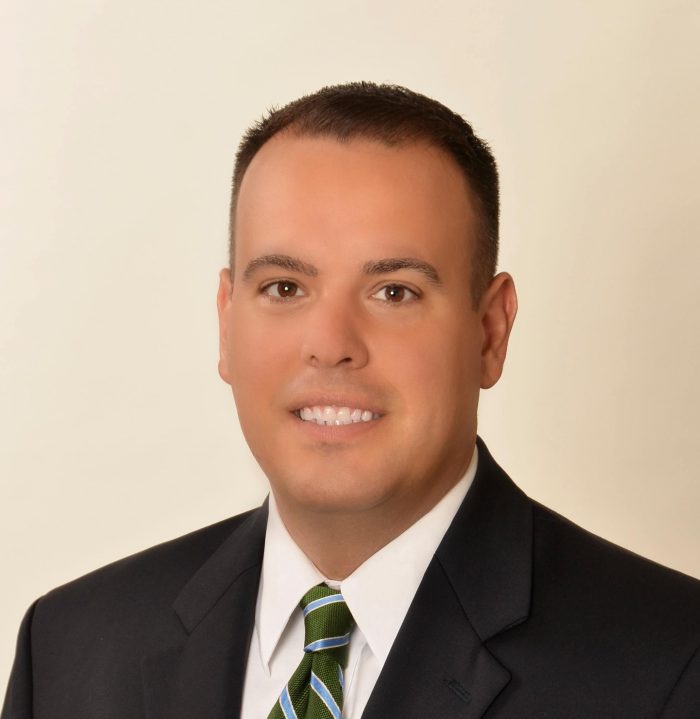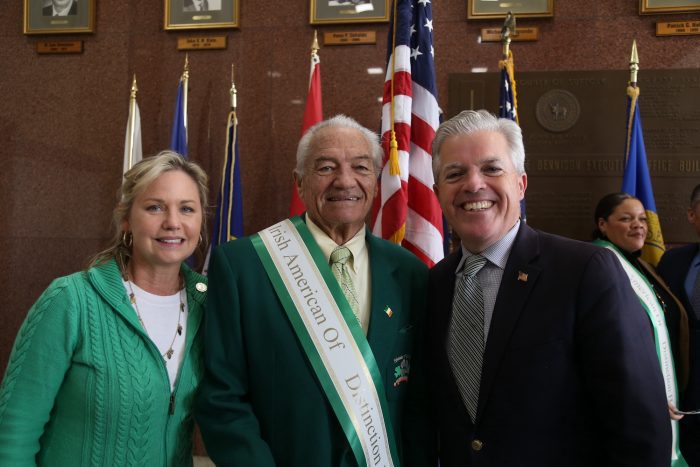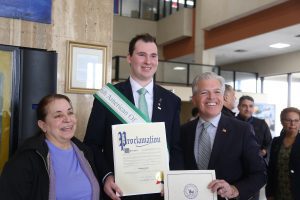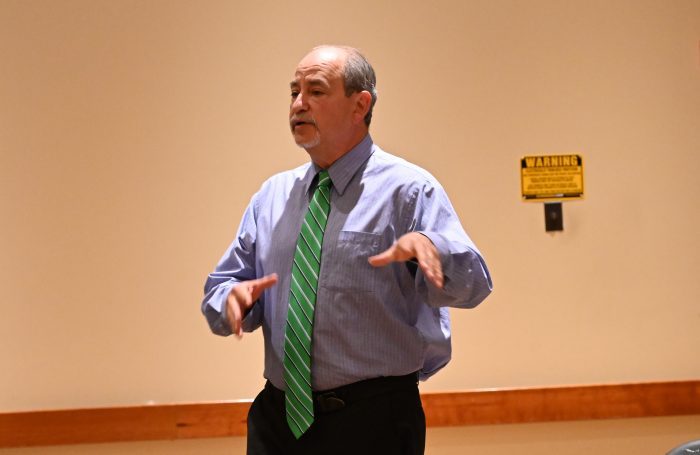One-on-one with Rebecca Kassay: Port Jeff trustee on climate-resilience planning
The Village of Port Jefferson will host community members for the Climate Resilience Plan workshop on Wednesday, April 5, at Village Hall from 6:30 to 8 p.m. During this meeting, residents will learn about the climate phenomena impacting the area, such as rising tides and intensifying flooding.
In an exclusive interview, trustee Rebecca Kassay, who also serves as the village’s sustainability commissioner, offered a preview of the meeting, detailing challenges associated with worsening flooding, accelerated erosion and the need to plan accordingly.
What are your expectations for the April 5 meeting?
The upcoming meeting is funded by the [New York State] Department of State under a grant that helps Port Jefferson Village plan to be a climate-resilience community. This information is pertinent to every community, but especially in a village like Port Jefferson, where we have such an intimate relationship with the harbor.
In our history, the village was named Drowned Meadow because it was a marshland. No one needs to be told that we’ve been experiencing increasing frequency, and the amount of flooding has increased greatly. We’re looking at this very seriously as a village on how to mitigate the flooding as climate change continues to increase in its impacts.
What is climate-resilience community planning?
A climate-resilience plan is planning to undertake both green and gray infrastructural projects as well as shifting planning and expectations in the community regarding the facts of climate change.
One of these for us is sea-level rise, the water level in the harbor being higher. Another notable one for us is the increased frequency of heavy rainfall, which causes flooding. In a climate-resilience community, we are planning to mitigate the flooding results from the effects of the climate.
Unfortunately — and I always feel like the bearer of bad news — flooding will affect almost every shoreline community on Long Island in an increasingly drastic way. As a community, we need to digest this future, start planning to protect the community assets that are most important to us and make the best planning and fiscal decisions for our future as a village.
Do you foresee coastal erosion mitigation as part of this equation for developing climate-resilience community planning?
Coastal erosion definitely falls under the umbrella of the results of climate change. We’ve been seeing this problem increase, especially in the last 10 to 20 years. Erosion is a natural process. It does happen over time. We’ve just seen a huge increase in the rate of coastal erosion.
Looking at coastal erosion and what our community plans to do regarding coastal erosion is part of climate resilience planning. Sometimes planning means building an infrastructure project, and sometimes it means a strategic retreat from an area that we, as a community, believe floods too frequently or is eroding at such a rate that the assets within that zone are very difficult and costly to protect.
One of the most difficult things about climate planning is that you have to realize that what’s been working for the last 50 to 100 years will not necessarily work in the near future.
What are some distinguishing characteristics between sustainable planning and the kind of planning that has existed up to this point?
The difference actually starts with being able to humble ourselves enough to realize that human-made solutions will not always solve the problem of climate change.
In the past 50-plus years, if there’s an issue with flooding or erosion — all these different problems that now fall into the realm of climate change — we as governments and communities have said, “Let’s build a project to fix it.” But the scale at which we are looking at climate issues is so vast that the thinking has to shift.
We have to realize that the environment is shifting around us, and our built environment is butting up against it in a way that we might have to change what we’re doing. It’s more working with nature as opposed to continually trying to work against it.
What role can residents play in this effort, and how critical is it for residents to educate themselves about the climate issues at stake?
The best way to fight fear is with action. I acknowledge completely that hearing and internalizing climate change data and projections is a very scary process.
I am currently working with [New York] Sea Grant and their local representative, Elizabeth Hornstein. We’ve recently discussed creating a workshop aimed not just at governments and nonprofits but at individual landowners, businesses and residents to empower them on what they can do with their properties to help mitigate climate change issues.
I’m hoping that within the next few months, we might be able to come up with a date for a workshop like this where residents can tune in and see if there are actions they can take to help. The Conservation Advisory Council in Port Jefferson has been working on some strategies [as a village advisory body].
We’ve designed this workshop so that it will be recorded in a high-quality fashion, just like the Board of Trustees meetings, so that residents who cannot or choose not to attend can view the meeting indefinitely on the village’s YouTube page.








































